





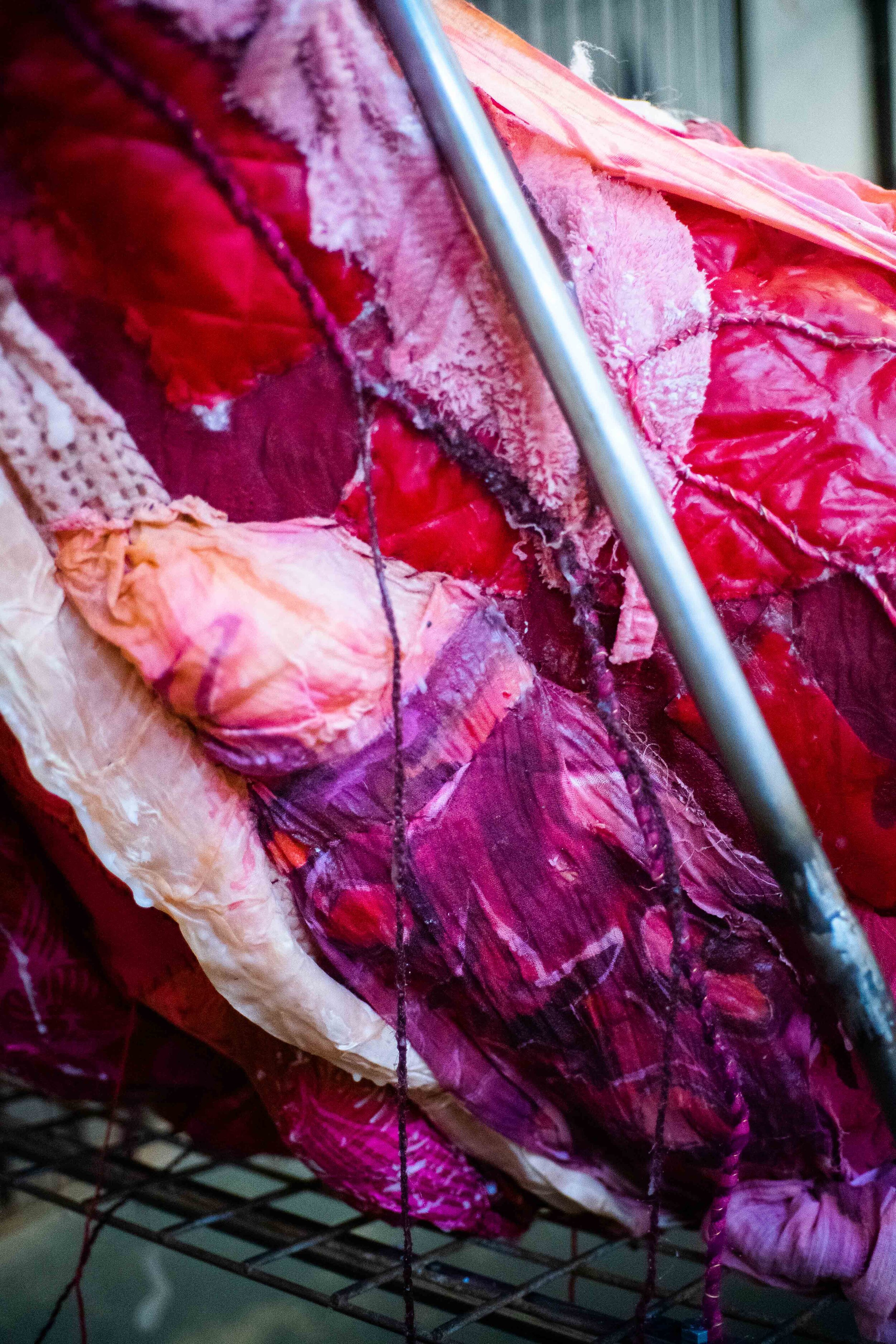
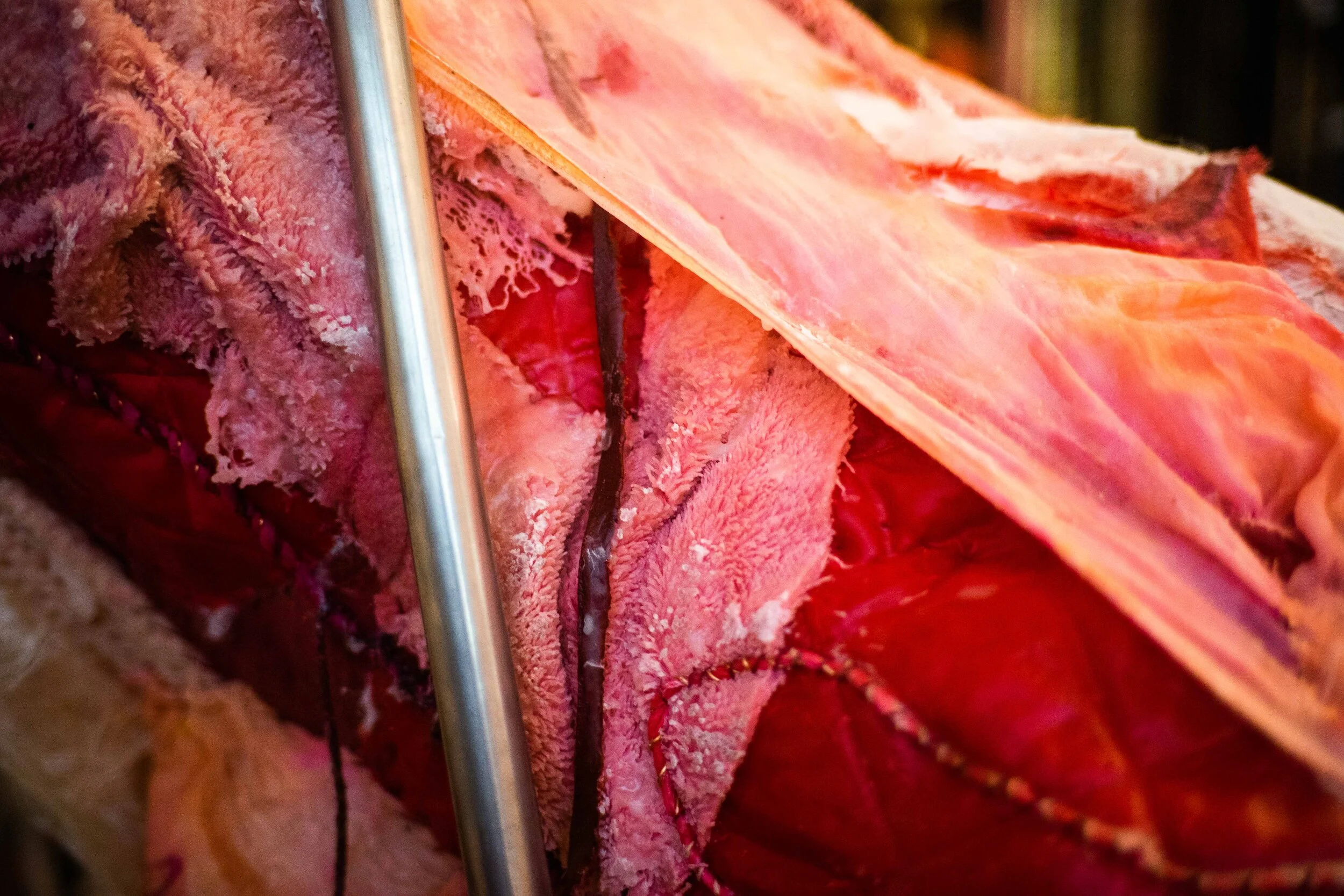

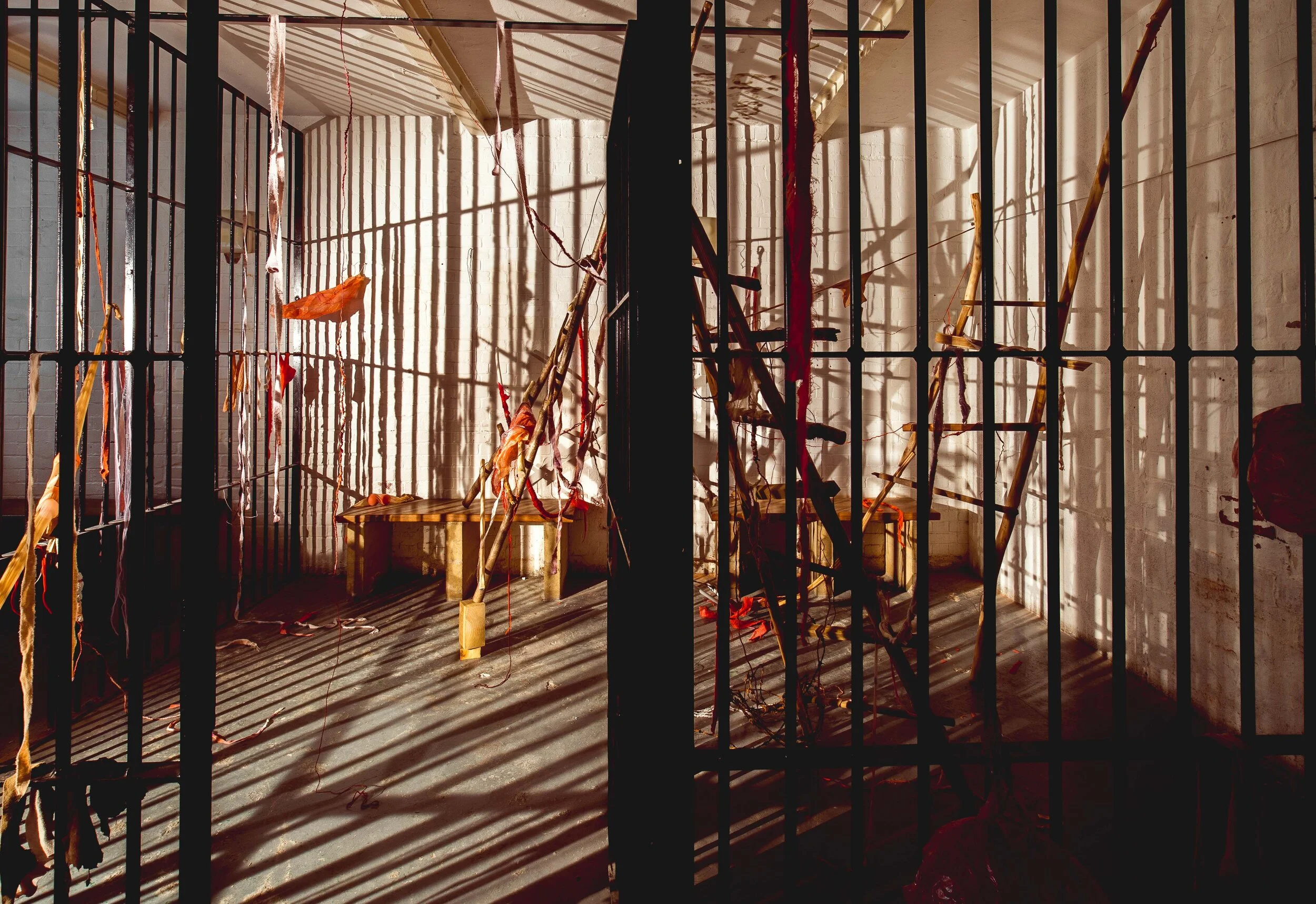

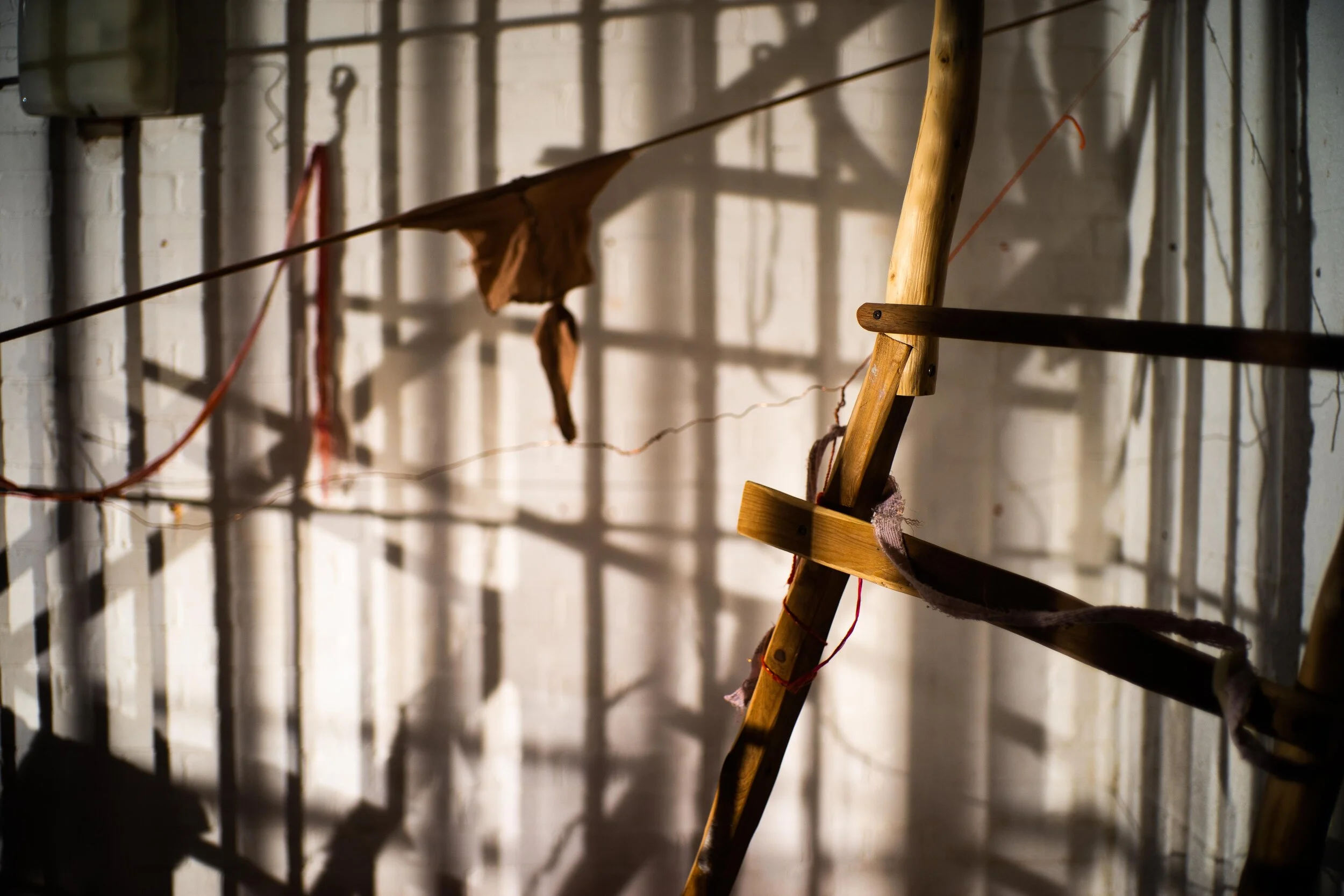





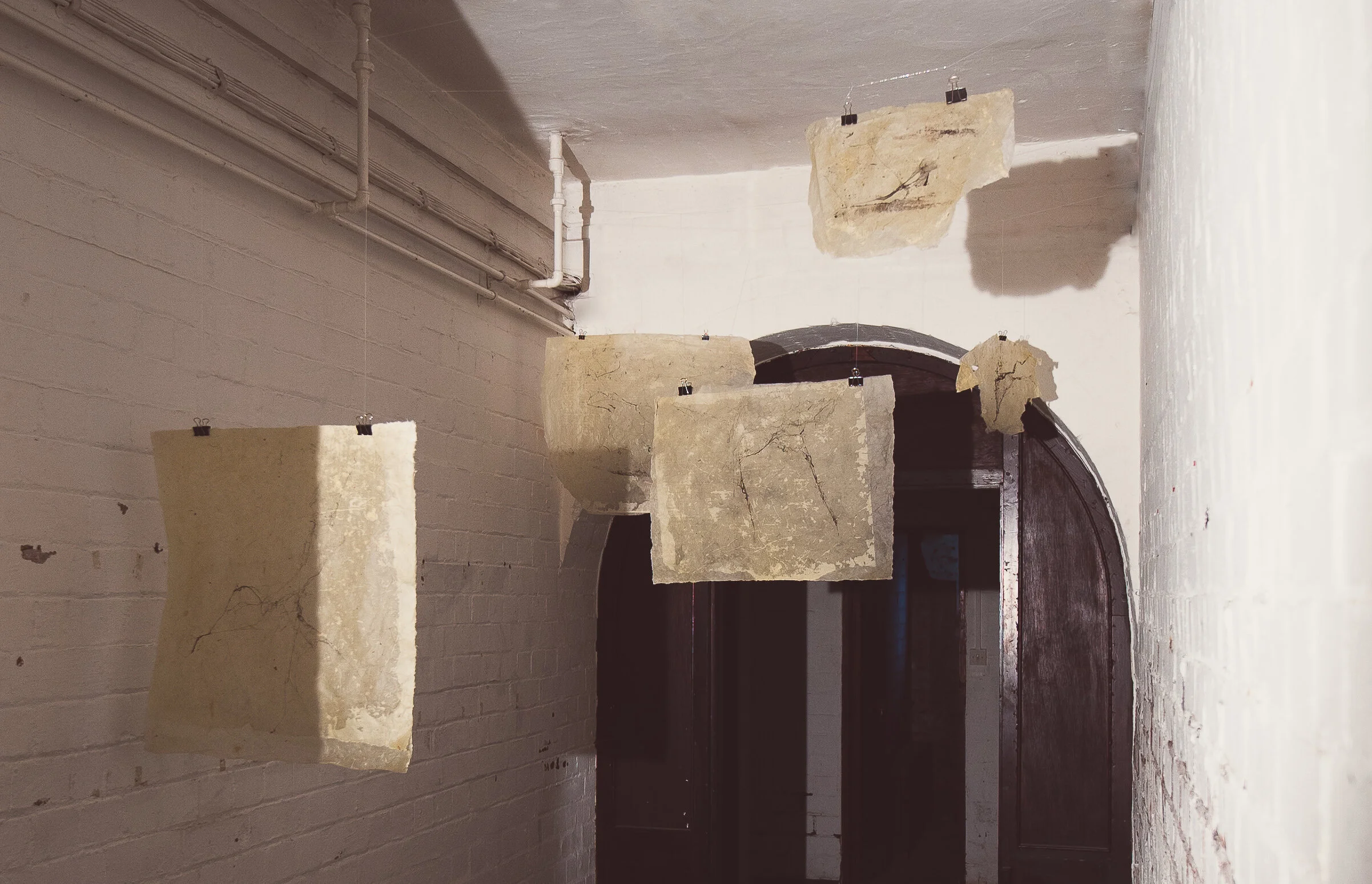
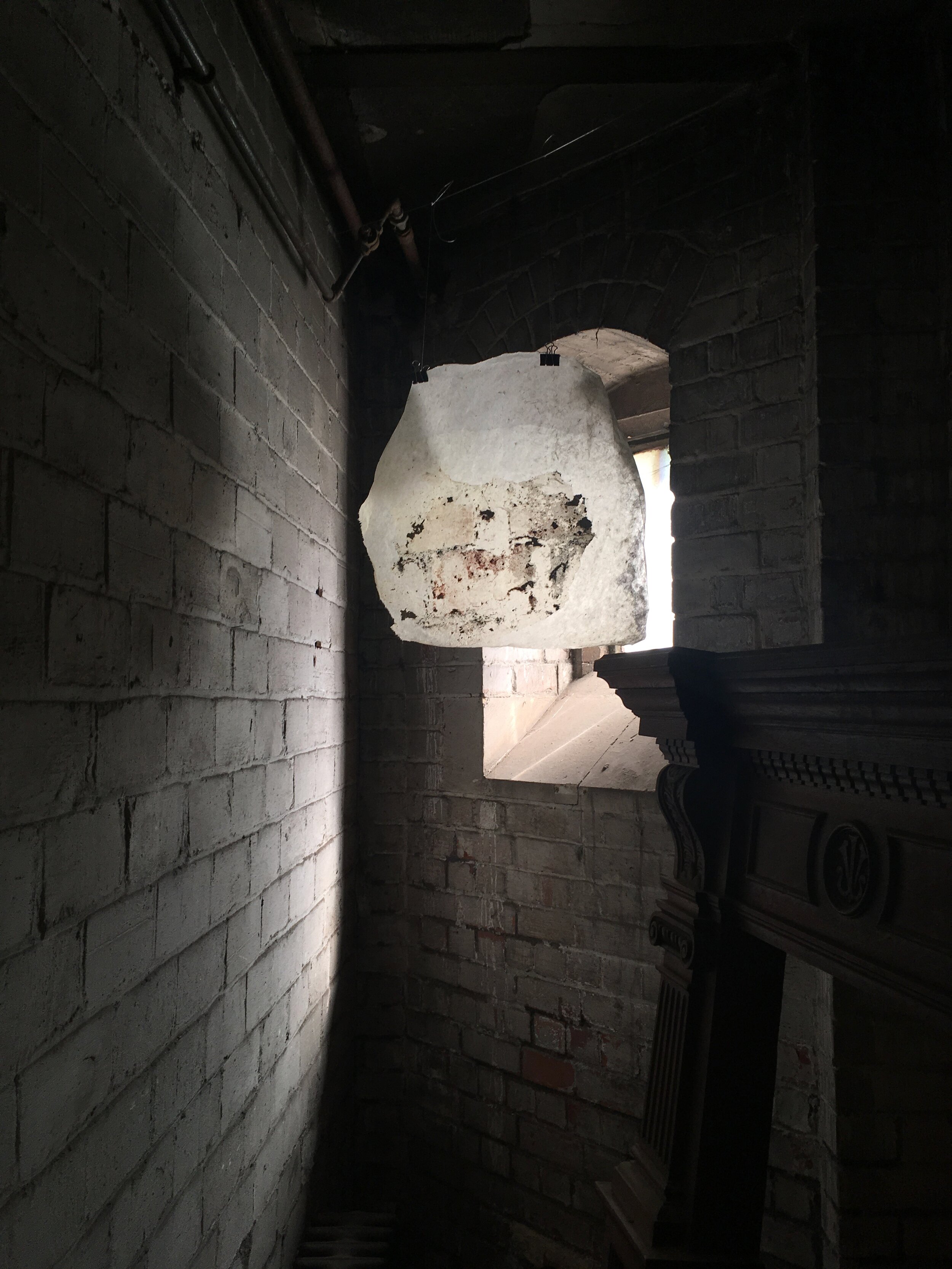
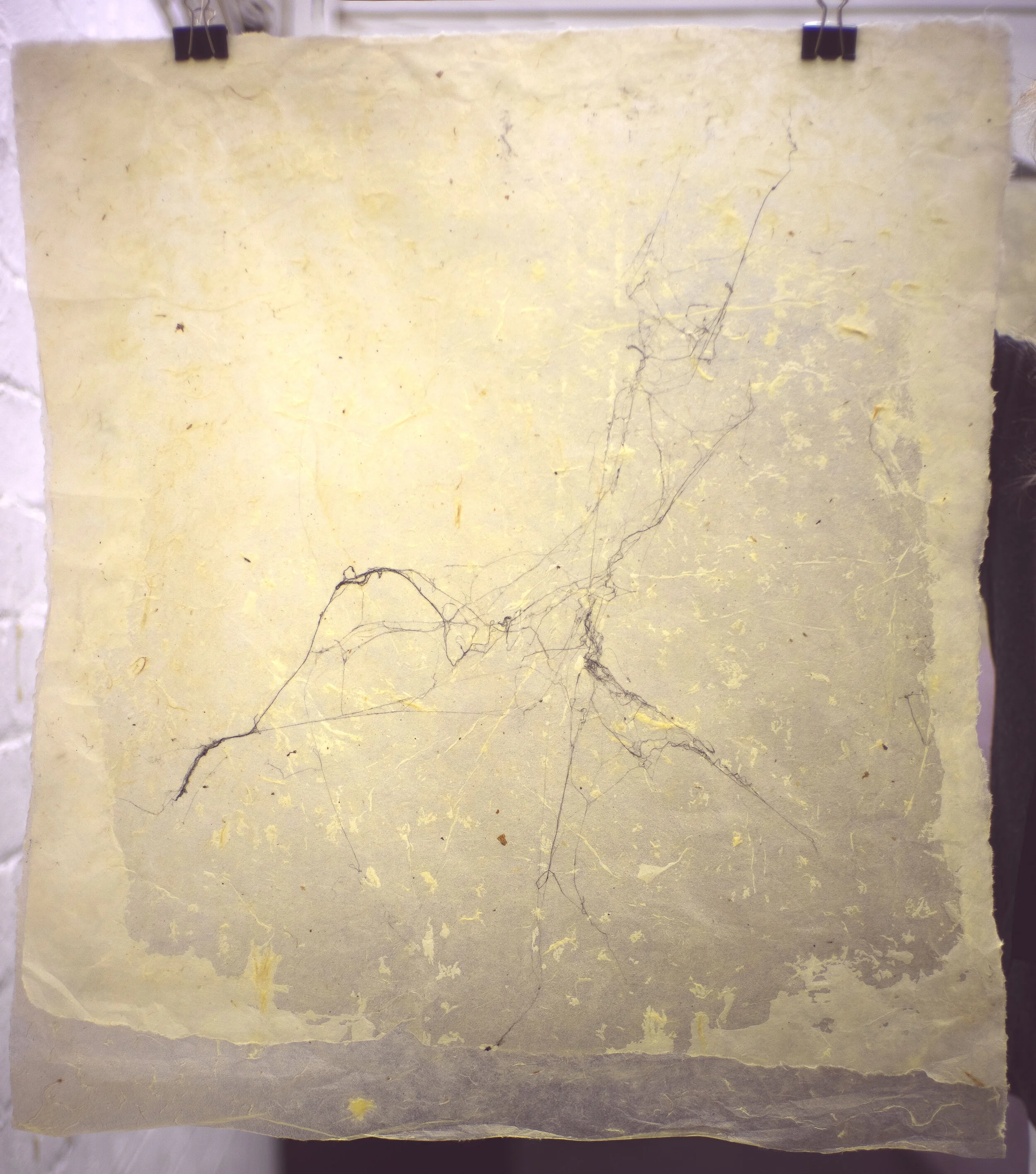









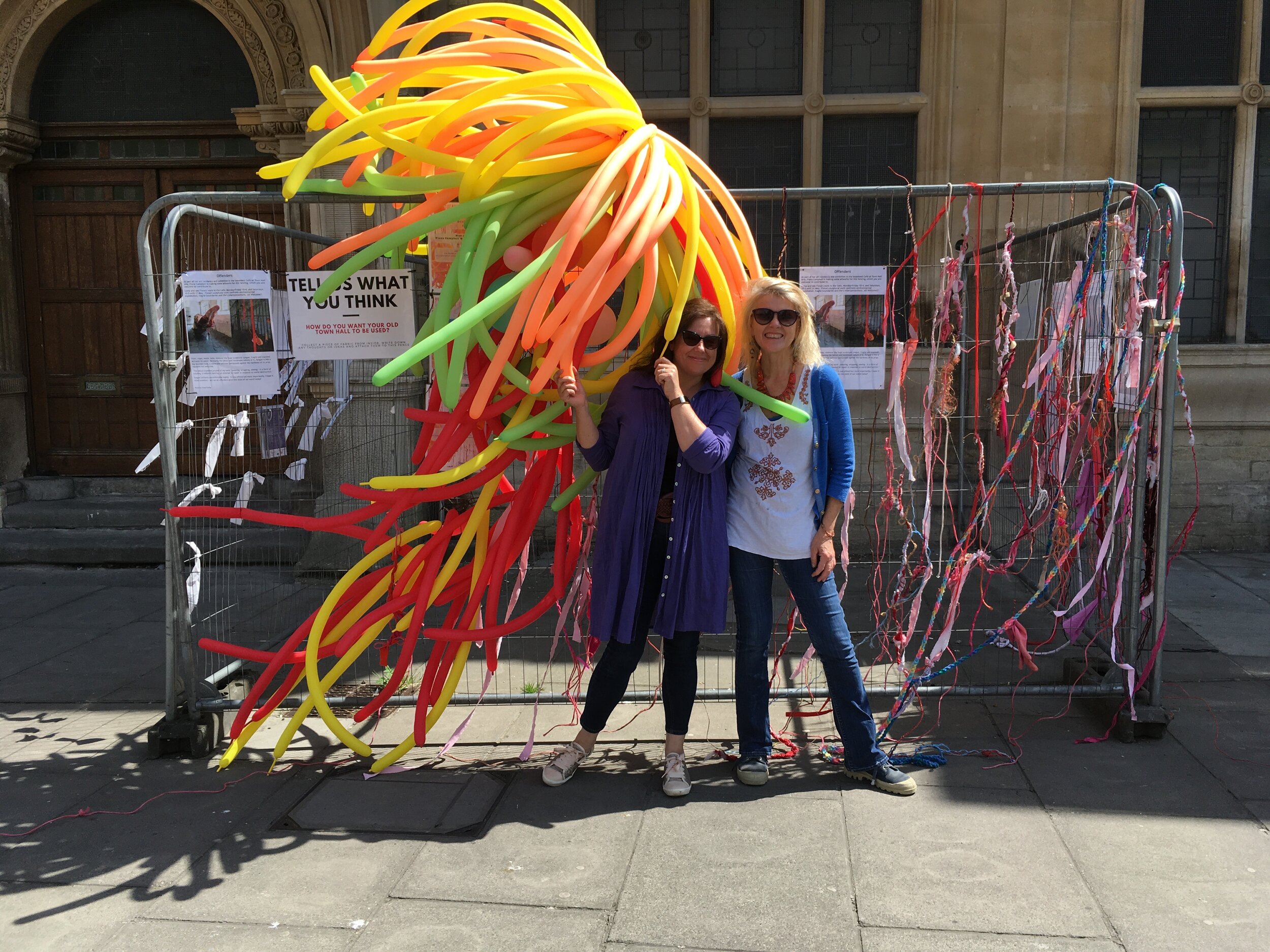

Tongue
Recycled and found materials: Recycled & found materials: old clothes died with avocado pits, foam, sponge, copper wire, steel, wax, twine, blankets, duvets, pillows, cushion, towels, wool, leather, other fabric, plastic, rubber, thread
158cms (h) x 330cms (l) x 135cms (w)
2019
Photo by Tchad Findlay
Fiona’s solo exhibition Offenders in the Victorian Cells, Town Hall Arts, Trowbridge in May 2019 was the culmination of an art residency in April. Her work responded to the site while confronting environmental horrors we are facing - factory-farming, plastic oceans, animal extinctions. It posed a question ‘are we all offenders given the state of our world?’.
Fiona used the residency to test out new ideas and take risks. The work was a precursor to an ACE-funded arts project B-Wing she co-curated the same year in Shepton Mallet Prison.
‘The ultimate symbol of autonomy, communication, freedom of speech. An uncomfortable association with sensuality and gratification. A vehicle for abuse and defiance. It takes a certain amount of courage to take this organ - this grotesque appendage that expresses so much about the dichotomies of our existence – and present it on such a monumental scale. But Fiona Campbell refuses to shy away from discomfort. Her response to the cells at Trowbridge Town Hall feels necessarily rebellious and subversive, placing the viewer in the positions of both the offender and the offended, and mercilessly forcing us to accept the power of the decisions we make.’ Katie Ackrill, Visual Arts Coordinator, Pound Arts, Corsham (previously of Town Hall Arts)
© Copyright Fiona Campbell. All rights reserved, 2021

2019
Recycled and found materials: fabric, old clothes died with avocado pits, foam, sponge, copper wire, steel, wax, twine, blankets, duvets, pillows, cushion, towels, wool, leather, plastic, rubber, thread
158cms (h) x 330cms (l) x 135cms (w)
Photos by Tchad Findlay
Flesh, organ, waste, body, violence: the huge sculptural tongue, fragile and exposed, activates its space. Revealing the labour and handmade nature of it, Tongue is like a big wounded body, a vulnerable softness juxtaposed against the hardness of its prop, repulsive but seductive. The labour-intensive process of Fiona’s work - weaving, wrapping, sewing - is a form of suturing, a cathartic healing, an attempt to repair in response to world destruction. Tongue confronts uncomfortable topics - factory-farming, our plastic oceans, animal suffering, extinctions, confinement versus freedom.

Rickety ladders ranging in length from 3 - 4 metres were precariously balanced; wrapped soft sculptural entrails made from recycled materials were woven through them, and dangled from cell bars.

Old webs, handmade khadi paper, linseed oil
Photos by Tchad Findlay
Fiona made a series of Spiderweb Drawings - ancient neglected spiders’ webs captured from dusty corners of the Victorian cells. The works became interventions in corridors and small spaces.

Graphite, paper
Photos by Tchad Findlay
To become acquainted with the space Fiona created a large graphite rubbing of a decaying section of old brick wall, and some imprints on fine handmade paper, which she oiled, transforming them into skin-like parchment.

Copper wire, twine, handmade khadi paper, wax
Photo by Tchad Findlay
In the toilet, large stone spheres incongruously left on the floor inspired an installation of interconnected cellular/planetary forms, like a constellation.

Fiona reached out to local community groups to engage through debate and collaborative making. Great conversations evolved with visitors, which expanded to discussions about human use and abuse of materials and wider issues about the state of our world. Towards the end, she engaged the community in make a growing artwork for the exterior fencing outside Town Hall Arts. As a finale, she collaborated with artist Katryn Saqui (also exhibiting at Town Hall Arts), to create a colourful Street Sculpture ‘Bahuli Entrails’. It was a wonderful way for members of the public to engage with art while having a bit of fun. All sorts of people dropped by to contribute to the work as a social activity, it attracted more people to enter inside the formal town hall to see the exhibitions, (several who don’t normally go to art exhibitions).